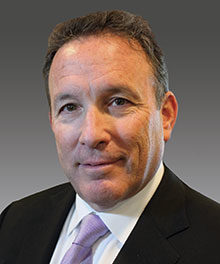The Plan

Last week I wrote about my 40-year journey since joining Marcum & Kliegman, a small Long Island, New York-based CPA firm, in 1981. Up until the summer of 2008, we had grown from 7 people (I was the 7th) in one office to 450 people in two offices–Long Island and New York City. The first 27 years of growth seemed easy. We started small, with virtually no market share, and grew the old fashioned way, by pounding the pavement, with those of us who were good at networking and business development bringing clients in, one at a time, client by client.
But then the financial meltdown of 2008 hit, and as they say, “the music stopped”. By that time, as a New York-based firm, we were at the mercy of the capital markets, and in 2008 all the liquidity that had existed up until then literally disappeared overnight. No liquidity, no IPOs, no secondary offerings, no PIPE transactions, no private equity deals, no new hedge funds, no capital for business expansion, no M&A, no lending for middle-market, privately held businesses. Nothing.
Many of the small public startups we represented that depended on that next capital raise went out of business, hedge funds and private equity funds couldn’t raise capital from new investors, and private companies couldn’t access bank loans, so we started losing business and contracting for the first time in my professional career–something foreign and unacceptable to me as a growth-oriented entrepreneur. It became apparent very quickly that the playbook that had worked for the first 27 years wasn’t going to work in 2008. If we weren’t going to grow organically, we were going to have to grow as other businesses do, through mergers and acquisitions.
With the support of our executive committee, we embarked on growing via M&A outside of our core New York geography. Our plan was very simple while at the same time very ambitious, but as they say, “ignorance is bliss.” Since it appeared that the worst of the recession was surrounding New York, the center of the world’s capital markets, the simple/stupid plan was to expand geographically outside of New York, to other large U.S. cities. In order to do so, we employed a number of very simple strategies. First we let everyone in the Firm know our plan, and all of our partners and associates became Firm ambassadors, trying to open doors for us to possible M&A transactions. Next we enlisted the help (for a fee, of course) of two of the accounting industry’s most prominent consultants, Jay Nisberg and Allan Koltin. Lastly, we continued to pound the pavement, but in addition to looking for clients, we looked for potential M&A targets.
Almost immediately Jay introduced us to Larry Blum, who at the time was managing partner of South Florida-based Rachlin LLP, and Allan introduced us to David Glusman, the MP of Philadelphia-based Margolis & Co. Rachlin merged into Marcum LLP on June 1, 2009 (when we officially changed our name from Marcum & Kliegman), and Margolis merged in on September 1, 2009, and we were on our way. Larry has since retired from Marcum while David still works with us in Philadelphia.
In 2009, Bob Charron, a former Marcum partner, introduced us to Tony Scillia, who at the time was running the New England division of UHY Advisors, a Marcum competitor. Although at the time it was just an introductory meeting, as fate would have it, Marcum acquired Tony’s division from UHY on April 16, 2010, expanding our geographic reach to Boston, MA, and New Haven and Hartford, CT. Also that year, Allan was instrumental in consulting on our merger with Stonefield Josephson, a California firm we knew through our membership in the Leading Edge Alliance, an international accounting association. The merger with Stonefield on October 1, 2010, brought us three offices in California (LA, Orange County and San Francisco), and we were now recognized as a national accounting firm – a strategy that also put us in a strong position to expand the scope of talent and range of services we were able to offer our clients.
But we were just getting started.
Our 2008 strategic plan was very simple: we needed to expand outside of New York. So where did we want to go? The answer was the top 15 or so business markets in the country, and Google came to the rescue. Just Google the top 15 business markets in the U.S. and the answer is right there. And that created the roadmap. In 2008 it was simple: a strategic plan of geographic expansion into the top 15 business markets in the country. And no one told us we couldn’t do it (I’m sure if they had we would have ignored them anyway.) In the spirit of “build it and they will come,” we decided we wanted to do it and we did it. Simple–or maybe just a lot of hard work coupled with a lot of luck (a combination that’s worked for the last 40 years or so).
Stay tuned next week for how our strategy has evolved since 2010.
